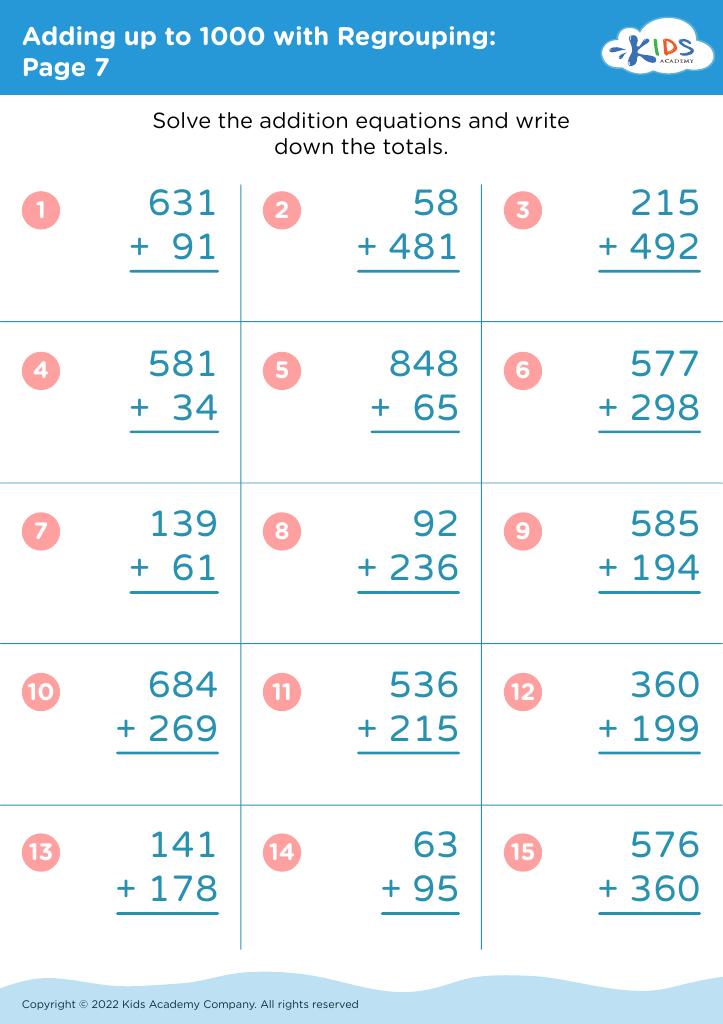Identify word patterns Worksheets for Kids
1 filtered results
-
From - To
Question/Answer
How to test a Grade 2 student’s Identify word patterns skills?
To test a Grade 2 student's ability to identify word patterns, provide them with a list of words that include a mix of simple rhyming words, words with common prefixes or suffixes, and words that follow the same phonetic rules. Ask them to group words with similar patterns or to pick out words that follow a given pattern.
What does the Identify word patterns skill mean when it comes to Grade 2 Adding up to 1000 with Regrouping learning?
The Identify word patterns skill in the context of Grade 2 Adding up to 1000 with Regrouping focuses on recognizing and understanding common language used in word problems. This skill aids students in deciphering the problem's requirements, especially in problems involving addition up to 1000, making it easier for them to apply regrouping strategies to find solutions.
How to train the Identify word patterns skill in Grade 2 students learning about Adding up to 1000 with Regrouping?
To train Grade 2 students in identifying word patterns for adding up to 1000 with regrouping, incorporate activities like sorting word problems by keywords, highlighting or underlining numbers and action words in word problems, and practicing with simple, repetitive word problems that gradually increase in complexity. This helps students recognize patterns and understand the regrouping concept in context.




.jpg)



.jpg)







